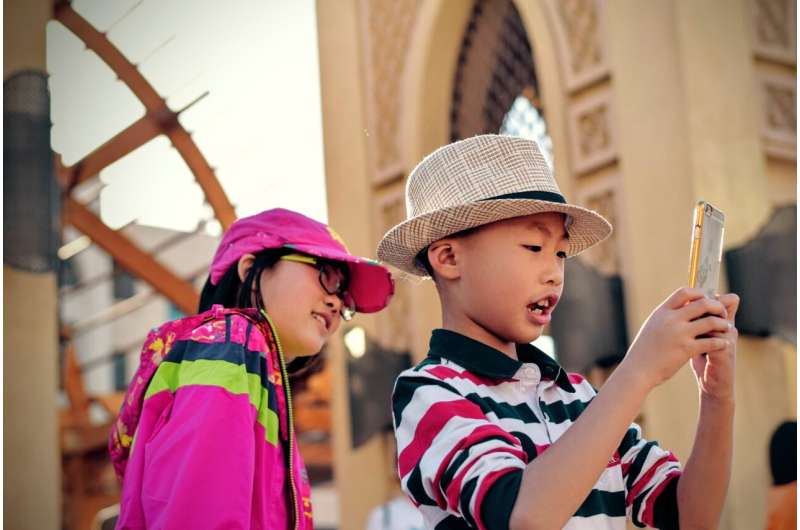How children are being targeted with hidden ads on social media

Have you ever accidentally clicked on an advert while scrolling on social media because you didn't realize that's what it was? This is what advertisers call "content marketing".
Using funny memes, insider-driven stories or inspirational content, this type of advertising disguises its commercial nature. Notably, it features no call to action, no "buy this, it's great!". There isn't even an obvious connection to the product or the service being advertised. Anything works so long as it promotes positive emotions in the consumer.
Stealth advertising is of course nothing new. Product placement has been around since the mid-1890s—it is as old as the moving image itself.
But the combination of content marketing and social media creates something far more powerful. And when the product being sold is addictive, or potentially dangerous, the impact on the most vulnerable audiences is alarming.
Minimal engagement
As a brand, if you succeed in building up positive emotional associations in the minds of your consumers, you won't need to drive a hard sale for your product. In fact, hard sales and direct calls to action do the opposite. Research has shown how they result in consumers constructing raising mental defenses as they realize they're being sold to.
To avoid this, content marketing ads are designed to trigger as little cognitive engagement as possible. Instead they are designed to create a warm fuzzy feeling or to make their audience giggle.
This way, a brand turns from a market crier to a friendly pal. Which, in the age of social media, is a pal gaining followers. As these followers like, comment on and share any ad, it gains momentum—the holy grail, for marketers, being to see it go viral.
Would you like or share a supermarket advert saying, "Chicken fillet this week only £2.99"? Probably not. But imagine you see a funny post like the one from Aldi shown below, which references the Netflix series Squid Game.
After tonight's game, levels of arrogance are at their highest since 1996, and the W.H.O has this advice for non-England fans...
(18+ BeGambleAware) pic.twitter.com/nrhh9xbKOh
— Paddy Power (@paddypower) June 29, 2021
If you've seen the show, you will get the inside joke and feel like part of the in-crowd. So, you share it, showing others that you get it. It doesn't matter to you that the post is from Aldi—you might not even have noticed. But somewhere in your brain (and in the brains of your network and your network's network), a synapse fires, a new connection has started to build up: Aldi is one of the cool kids.
Mental defenses
So far so harmless? Not quite. Not all brands have the same incentives. While some brands sell chicken, others sell addictive, potentially dangerous products—from alcohol to gambling—and for them, content marketing is as attractive as sheep's clothing is to a wolf.
Take gambling brands. In a recent study, we analyzed more than 888,000 Twitter gambling adverts. We found that 40% were content marketing. Coming back to those natural mental defenses that we build up immediately and automatically when we detect an ad—if the ad's telling us to gamble, the defense will be even higher. So content marketing is more sneakily effective.
But there is one target audience for whom the effects can be disastrous. Under-25s—including children below the legal gambling age—are not so good at putting up mental defenses. And this is the group that, according to our research, engages—likes, shares, follows—the most with gambling content marketing on Twitter.
Children have fewer skills for recognizing advertising than adults—they just don't have the experience. And 17–24 year olds are more prone to process advertising affectively because, as neuroscientific research confirms, their brain structure is undergoing dramatic changes and the neocortex (where rational decisions are made) is in upheaval.
When presented with content marketing, it is nearly impossible for children to immediately recognize the posts' persuasive intent. And while young adults might be able to recognize that the posts are advertising, they find it much harder than older people to resist being persuaded. So neither group is likely to make the mental counter arguments needed to resist being taken in by content marketing.
For our new study, we worked with 650 participants and compared the reactions of 11- to 16-year-olds, 17- to 24-year-olds, and those over 25 to gambling content marketing on Twitter. We measured both whether their reactions were positive or negative and the intensity of the emotion.
Not surprisingly, gambling content marketing was much more appealing to all three groups than ads with a clear call to action. But the appeal of content marketing to children and young persons simply went through the roof—they found gambling content marketing posts nearly four times more appealing than those over 25.
This effect was even stronger for esports bets—which have an almost inherent appeal to children, teens and young adults, because children and young people love games. This is alarming when you consider that two-thirds of all UK-based Twitter followers of gambling accounts are under 25 years old. They may come for the banter, but because they are young and their brains make them impulsive, they could well stay for the gambling addiction.
Ah! My groin! pic.twitter.com/VBWObzlpFN
— Paddy Power (@paddypower) February 7, 2021
What makes this even more serious is that the Advertising Standards Authority won't regulate content marketing—it will only regulate where there is a mention of the product or service, which is exactly what turns consumers off.
This article is republished from The Conversation under a Creative Commons license. Read the original article.![]()





















